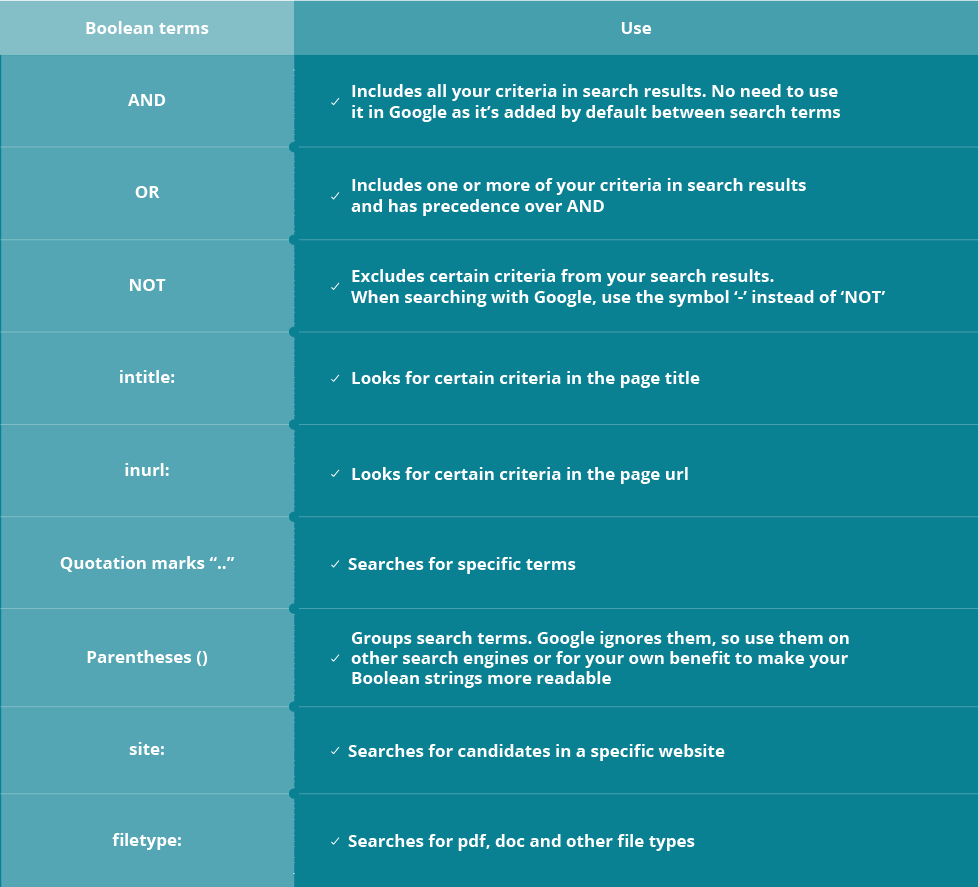

On the other hand, if their profile is in Polish, you’d use “programista”. If they work in an international environment their profile is probably in English, so you would use “developer” as a keyword. Let’s imagine you’re looking for a Java developer who speaks Polish. You will get the opposite result with the OR operator, which will allow to include more profiles in your results. So when you’re sourcing on LinkedIn, you’ll use: In Google space replaced the regular spelling of the AND operator. But remember, it will not work when sourcing on… Google! Since Boolean operators aren’t necessarily used by all of the search engine’s user, Google made things even easier for us. AND is one of the three basic operators we use and will work in most databases. This can be helpful if you are unsure if an author is listed first name then last or the other way around.Įxample: Ernest ADJ Hemingway will find both Ernest Hemingway and Hemingway, Ernest.As you see, it really is simple. Near or N# searches for your two keywords regardless of the order in which they appear and are separated but a maximum of words apart.Įxample: tax N5 codes will find articles that have the words tax and codes a maximum of five words apart no matter the order in which they appear.ĪDJ (or adjacent to) is a way to link words into phrases like quotation marks, it tells the computer that the keywords must be found next to one another but unlike quotation marks the words can appear in either order. Key here is that repressed is BEFORE memory. Within or W# searches for your two keywords in the order of your search string with a maximum number of words between them.Įxample: repressed W8 memory will find articles that have the word repressed first with up to eight words apart from the word memory. Using N# or W# followed by a number tells the computer you want the two search words to be found within a certain number of words of each other. N# (near) and W# (within) are Proximity Operators that will connect words together similar to using the “quotation marks”. Not all search engines or databases accept Proximity Operators so make sure to read the help screen for more advanced help.

Proximity (aka positional) Operators are not really part of Boolean Logic, but like Boolean they help formulate search statements. S horting Manufactur* down to Man*, you would receive information about manufacturing, but you would also information about management, manuals, mankind, manipulation, and people named Manuel, etc.

Manufactur* will search manufacturing, manufacturer, manufacture, manufactures. Remember not to shorten the search term too much. Thus, you should use only the root word in a search string, but also use a wildcard to indicate that you want articles with all other forms of the word in them. Example: ski? OR ski* - other words that might be used in an article about "ski" are skiing, skier, and skis. If you were to type skier, you would miss all the articles about skiing or people who like to ski. The * is for truncation or finding all of the various endings a word could have so a search for work * will find all of the words that start with work but have different endings such as work ing, work ed, work horse etc. Generally speaking the ? replaces a letter such as wom ?n will find wom en and wom an. (Note neither symbol can be the first character in your search term). Wild Card and Truncation symbols Searching using ? as a wildcard and * as a truncation symbol allows you to create searches where there are unknown characters, multiple spellings or various endings.


 0 kommentar(er)
0 kommentar(er)
